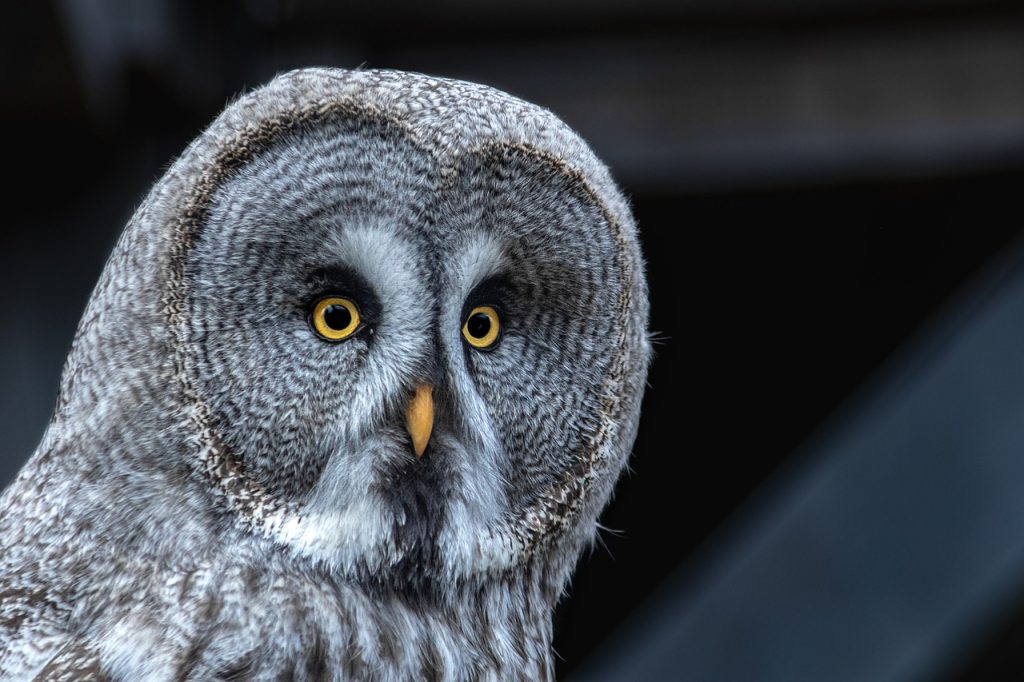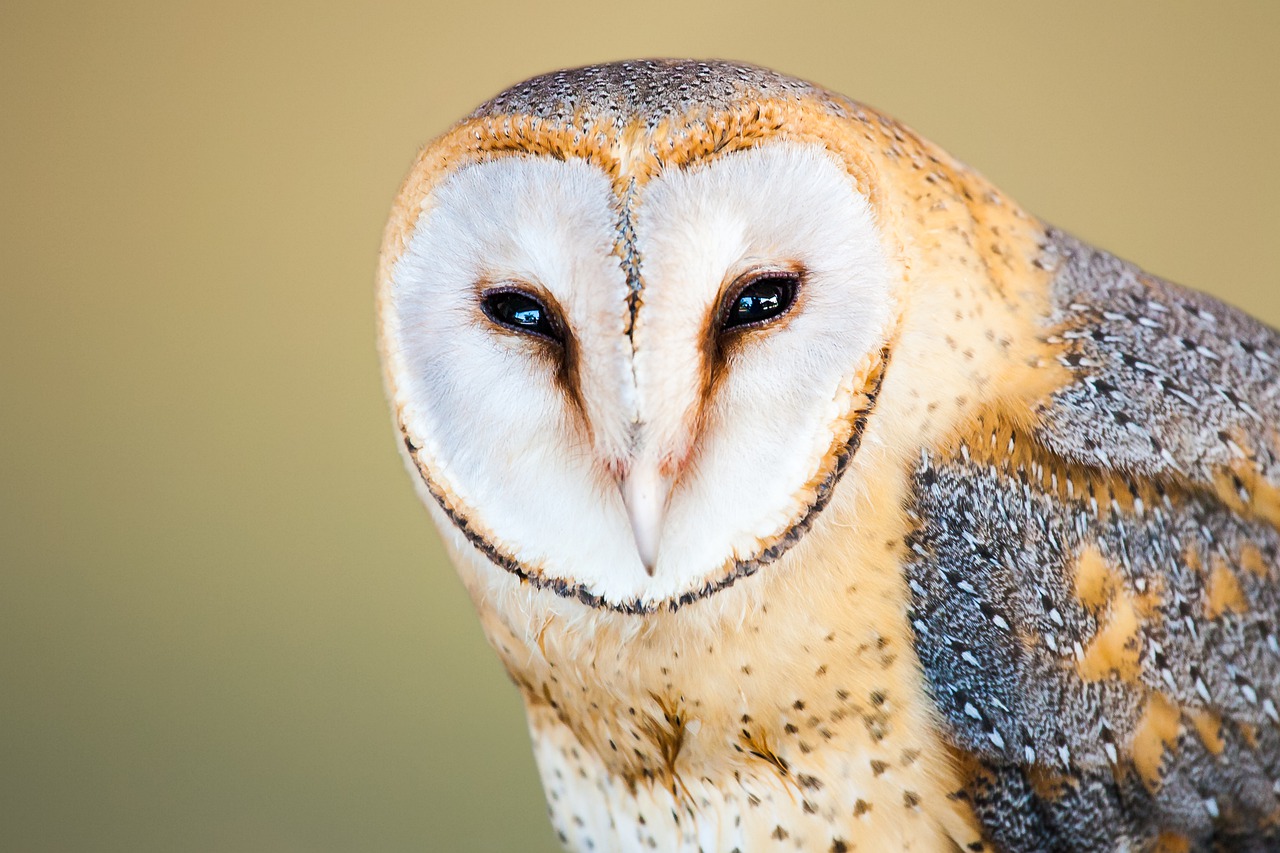Owls do not rely on feeding on a certain prey but need to catch their prey in darkness. Because of this, they have a distinctive appearance with a round face.
Owls rely on their excellent eyesight and keen hearing to track their prey. Owls have large, tubular eyes that sit on the front of their face allowing them to track their prey. Owls use the flat surface of the face to direct sound into their large ear slits.
Owls have very well developed vision and hearing, and their skulls reflect this. Owls have oversized skulls that accommodate large ear openings and eyes bigger than most birds. Some owls have eyes as large as ours.
Do you know where falcons go in winter? Find out here.

Large eyes
The large eyes are placed on the front of the face and have large pupils to allow more light into the retina. Tawny owls have eyes that are 100 times as powerful at gathering light as a pigeon and will enable them to find their prey.
While many animals have spherical eyes, birds have tubular eyes. They are placed at the front as they have a huge lens and cornea. Tubular eyes have a reduced field of view from spherical eyes and do not move in the same way. Owls have a visual field of 110 degrees, whereas a pigeon has 340 degrees.
Owls have eyes that work together, giving good binocular vision when both eyes look at the same object. However, because the structure is tubular, the eyes are more like a telescope fixed in the skull.
Most birds have eyes on the sides of their heads and only have a small arc of binocular vision to the front but a wide field of vision. This is good for birds that are preyed upon, but for owls, the predator, the need is for eyes used in attacking, not defending.
Owls have colour vision, can see better at night than most birds, and have excellent daytime vision. The tawny owl, for example, can see as well as a pigeon in daylight and two or three times as well as we can at night.
The iris of an owls eye can open wide in the dark, which allows more light to enter. The back of the eye is filled with rod receptors allowing them to see in the dark. Cone receptors are also present, which shows that they can see colour during the day.
The rods are grouped so that many feeds into one nerve cell to communicate with the brain. Although they cannot see detail that well, they can pick out objects in low light conditions. This is the benefit of having several receptors feeding into one nerve cell.
Owls have excellent sight due to the amount their eyes open, the size of the eye and the multiple rods packed together into one nerve cell.
Do you know how kestrels hunt? Find out in this article I wrote
Keen Hearing
Owls do not only rely on their excellent eyesight for hunting; they also use have excellent hearing, sometimes called ear-sight. Owls are sensitive to high-frequency sounds allowing them to catch their prey. Noises such as rustling leaves or a small rodent squeaking can lead an owl to its prey in total darkness.
Ear-sight is more developed in nocturnal owls than those that rely on their eyes during the day. Owls that live in the tropics also do not rely on their hearing as it is too noisy. Owls have developed audio abilities capable of finding their prey in complete darkness.
Although you may think that owls ears are much better than ours, they are only slightly more sensitive to ours. Unfortunately, humans have a poor sense of direction and distance if we only use our ears. However, owls don’t have ears symmetrically on the side of their heads, and they have a different frequency response.
The facial shape of owls is all part of their excellent hearing. The stiff feathers, which are tightly packed into rows around the face, reflect high-frequency sounds channelled into the ears through the disk-shaped face. Owls have large ear openings that are vertical slits down almost the whole depth of the skull. These are hidden beneath feather-covered flaps of skin which they can move to concentrate the sound towards the inner ear.
The facial disc of loose feathers has thick, stiff ones lining the edges, which act as a waveguide, almost like a satellite dish or a hearing trumpet. If you cup your hand behind your ear, it can give you an idea of what these feathers do. Owls can move the stiff feathers using muscles. This allows them to alter their focus to individual sounds.
These feathers are often asymmetrical, and in many species, the ear cavities in the skull are also different to the other. The ear structure between different species is also different. Nocturnal owls have larger eardrums and more nerve cells in the auditory area of the brain than diurnal owls.
The large skull helps them locate sounds. Noises from one side will be louder in the ear nearest to it. Owls can locate sounds horizontally up to four times better than a cat. Owls also need to be able to identify sounds vertically as well to be able to pinpoint their prey.
Owls are excellent at this and can find their prey almost effortlessly. They move their ear flaps to change the shape and size of the openings to make reception different for each ear.

